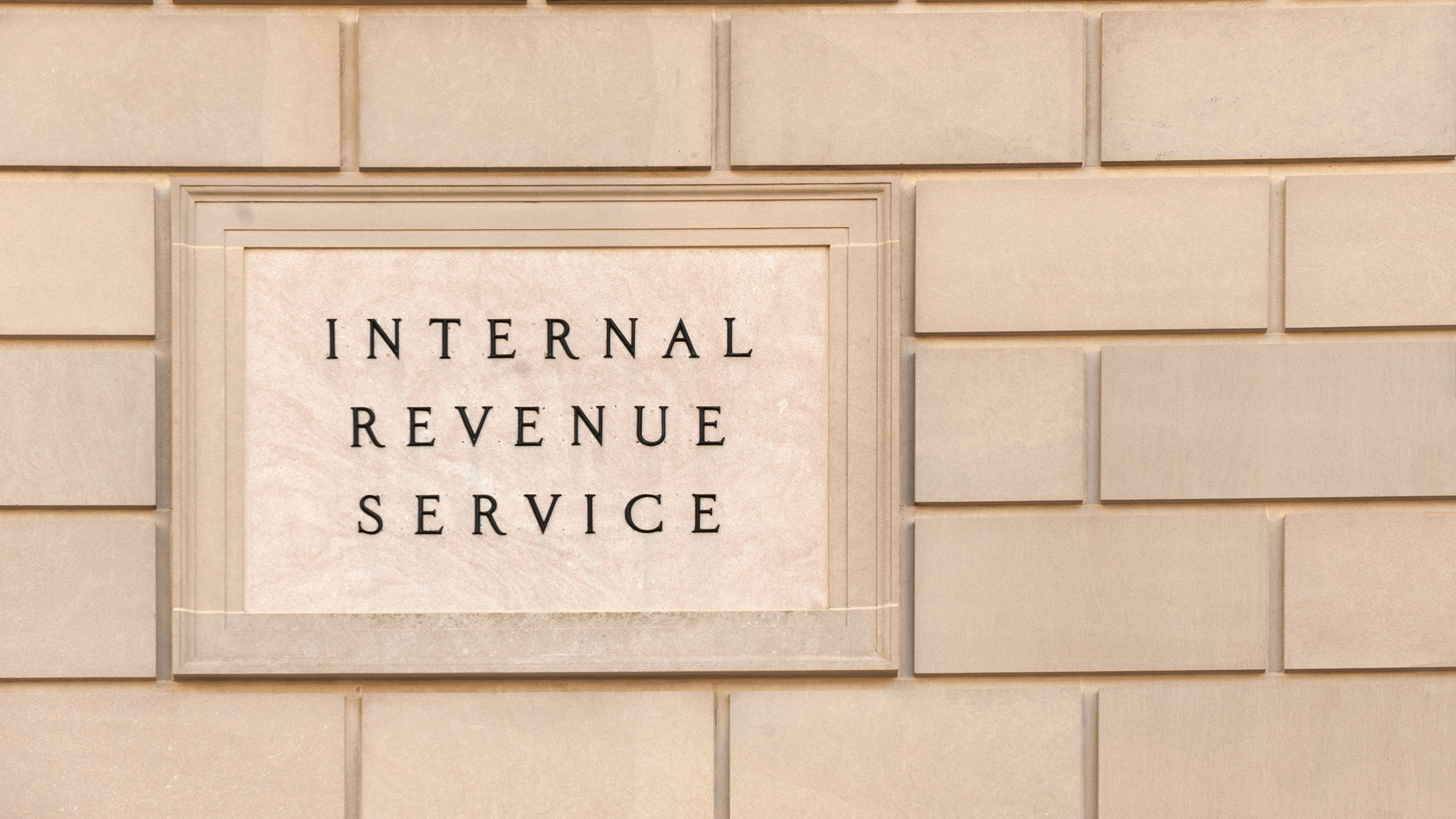IRS Direct File: What You Need to Know for 2025
The Trump administration has ended this free IRS tax filing program. Find out what's happening and what it means for you.


The IRS Direct File program will not be offered for the 2026 filing season, leaving potentially millions of taxpayers without this free file option.
The program, which allowed residents in 25 pilot states to file directly with the federal tax agency, was officially discontinued this month. The decision to shutter Direct File was set in motion by the 2025 Trump tax bill, though officially executed after a long-awaited U.S. Treasury Department task force report was released.
Here's more of what you need to know.
From just $107.88 $24.99 for Kiplinger Personal Finance
Become a smarter, better informed investor. Subscribe from just $107.88 $24.99, plus get up to 4 Special Issues

Sign up for Kiplinger’s Free Newsletters
Profit and prosper with the best of expert advice on investing, taxes, retirement, personal finance and more - straight to your e-mail.
Profit and prosper with the best of expert advice - straight to your e-mail.
What was IRS Direct File?
Direct File was a free way for taxpayers to file directly with the IRS. It was created after the tax agency found that many filers would be interested in such a program, with funding from the Inflation Reduction Act (IRA), signature legislation from the Biden administration.
- For last year's 2024 tax filing season, Direct File's initial pilot proved a success across 12 participating states, with over 140,000 taxpayers using the service.
- According to the IRS, most reported their experience with the program as “Excellent” or “Above Average.”
- In tax season 2025, the Direct File program opened on January 27 (the day the IRS officially began accepting returns), and 30 million taxpayers were expected to be eligible.)
However, participation was on a state-by-state basis. Basically, you could only use Direct File if you lived in a nonparticipating state, the District of Columbia, or a U.S. territory.
IRS Free File vs. Direct File: What’s the difference?
Although they may have similar names, the IRS Direct File program differed from Free File. Free File partners with private-sector companies to offer free tax filing services, while Direct File was an option to file directly through the IRS.
Unique eligibility requirements also separated the two programs. Free File is generally for taxpayers with lower- to middle-income. For tax year 2025, that’s an adjusted gross income (AGI) of $84,000 or less (for guided tax software).
Comparatively, Direct File had the following income limits:
Filing Status | Income Limit (must be less than) |
Single Filer | $200,000 in one income source ($168,600 if multiple employers) |
Married Filing Jointly | $250,000 in combined income ($168,600 if multiple employers) AND under $200,000 for one spouse |
Married Filing Separate | $125,000 in income |
However, Direct File was limited by the types of income the tool could accept.
Commonly accepted incomes included: W-2s, Social Security, unemployment benefits, interest income, and HSA distributions. If you had income types that fell outside of that, like gig economy income, business income, rental income, or capital gains and dividends, you could not use Direct File. Certain deductions and credits were also limited for Direct File.
When Did IRS Direct File End? The Final 2025 Status
According to the Associated Press, IRS official Cynthia Noe reportedly sent an email earlier this month to state comptrollers that typically participate in the program.
"IRS Direct File will not be available in Filing Season 2026," the email read. "No launch date has been set for the future."
The announcement came after a Treasury task force report recommended terminating the program last month. Among the reasons cited were cost and low participation. The report stated that the program had cost about $138 per return to administer, though the uptake had risen 111% compared to the year prior.
Instead of Direct File, the GOP seeks to further improve the IRS's Free File program, according to the Treasury report. However, Direct File was established to address the limitations of Free File, like income limits and varied tax situations.
Plus, limitations aside, some are concerned that the call to eliminate Direct File is mainly due to its competition with commercial tax preparation software like H&R Block and TurboTax. (Free File uses private tax software companies.)
Regardless, taxpayers who have used Direct File for the last two years should begin searching for other free ways to file taxes for the 2026 filing season.
Read More
- Ready to File Taxes? What to Do
- A Bunch of IRS Tax Deductions and Credits to Know
- Outsourcing Taxes? Here’s the Age ‘Most Americans’ Hire a Tax Professional
- Why Digitizing Your Tax Records Can Simplify Your Filing
Profit and prosper with the best of Kiplinger's advice on investing, taxes, retirement, personal finance and much more. Delivered daily. Enter your email in the box and click Sign Me Up.

Kate is a CPA with experience in audit and technology. As a Tax Writer at Kiplinger, Kate believes that tax and finance news should meet people where they are today, across cultural, educational, and disciplinary backgrounds.
-
 Samsung Galaxy S25 Ultra for $4.99 a Month: A Closer Look at Verizon’s Deal
Samsung Galaxy S25 Ultra for $4.99 a Month: A Closer Look at Verizon’s DealVerizon’s aggressive pricing makes Samsung’s top-tier phone tempting, but the real cost depends on your plan and how long you stay.
-
 I'm 59 with $1.7 million saved and lost my job. Should I retire?
I'm 59 with $1.7 million saved and lost my job. Should I retire?We asked professional wealth planners for advice.
-
 4 Times to Say Yes to a Roth Conversion and 4 Times to Say No
4 Times to Say Yes to a Roth Conversion and 4 Times to Say NoRoth conversions should never be done on a whim — they're a product of careful timing and long-term tax considerations. So how can you tell whether to go ahead?
-
 Holiday Tax Scams 2025: 'Tis the Season to be Wary
Holiday Tax Scams 2025: 'Tis the Season to be WaryTax Scams Navigating tax tricks of the holiday season may be daunting, but don't let that destroy your festive spirit
-
 Retirees in These 7 States Could Pay Less Property Taxes Next Year
Retirees in These 7 States Could Pay Less Property Taxes Next YearState Taxes Retirement property tax bills could be up to 65% cheaper for some older adults in 2026. Do you qualify?
-
 Estate Tax Quiz: Can You Pass the Test on the 40% Federal Rate?
Estate Tax Quiz: Can You Pass the Test on the 40% Federal Rate?Quiz How well do you know the new 2026 IRS rules for wealth transfer and the specific tax brackets that affect your heirs? Let's find out!
-
 Law Reversal Looming? Trump Eyes 2026 Gambling Winnings Tax Change
Law Reversal Looming? Trump Eyes 2026 Gambling Winnings Tax ChangeTax Deductions It's no secret that the IRS is coming after your gambling winnings in 2026. But how long will that last?
-
 5 Types of Gifts the IRS Won’t Tax: Even If They’re Big
5 Types of Gifts the IRS Won’t Tax: Even If They’re BigGift Tax Several categories of gifts don’t count toward annual gift tax limits. Here's what you need to know.
-
 The 'Scrooge' Strategy: How to Turn Your Old Junk Into a Tax Deduction
The 'Scrooge' Strategy: How to Turn Your Old Junk Into a Tax DeductionTax Deductions We break down the IRS rules for non-cash charitable contributions. Plus, here's a handy checklist before you donate to charity this year.
-
 IRS Says You Made a Tax Return Mistake? A New Law Could Help You Fight Back
IRS Says You Made a Tax Return Mistake? A New Law Could Help You Fight BackTax Law Updated taxpayer protections change what the IRS must explain on error notices and how long you have to respond.
-
 Tax Refund Alert: House GOP Predicts 'Average' $1,000 Payouts in 2026
Tax Refund Alert: House GOP Predicts 'Average' $1,000 Payouts in 2026Tax Refunds Here's how the IRS tax refund outlook for 2026 is changing and what steps you can take now to prepare.